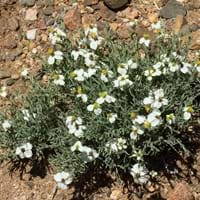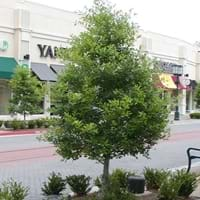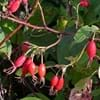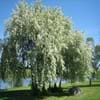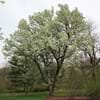Life Span
Annual and Perennial
Perennial
Type
Flowering Plants, Shrub
Broadleaf Evergreen
Origin
Mexico, Southwestern United States, Texas
Hybrid origin
Types
Not Available
Not Available
Habitat
Hot climate regions, Humid climates
By seashore, sandy seeps, Woodlands
USDA Hardiness Zone
5-9
6-9
AHS Heat Zone
Not Available
Not Available
Sunset Zone
Not Available
21,22
Habit
Clump-Forming
Pyramidal
Flower Color Modifier
Bicolor
Bicolor
Fruit Color
Not Available
Red
Leaf Color in Spring
Dark Green
Green
Leaf Color in Summer
Green, Light Green
Green
Leaf Color in Fall
Green, Light Green
Green
Leaf Color in Winter
Green, Dark Green
Green
Leaf Shape
Long linear and narrow
Elliptic and Ovate
Plant Season
All year
Spring, Summer, Fall, Winter
Sunlight
Full Sun
Full Sun, Partial Sun
Type of Soil
Moist
Clay, Loam, Sand
The pH of Soil
Neutral, Slightly Acidic, Slightly Alkaline
Acidic, Neutral
Soil Drainage
Well drained
Average
Bloom Time
Mid Summer, Summer
Early Spring, Spring, Late Spring
Tolerances
Drought
Pollution, Salt, Soil Compaction
Where to Plant?
Container, Ground, Pot
Ground
How to Plant?
Seedlings
Rooted stem cutting, Stem Cutting, stem tip cuttings
Plant Maintenance
Low
Medium
Watering Requirements
Get enough water whenever the soil is dry
Average Water Needs, Do not water frequently
In Summer
Lots of watering
Lots of watering
In Spring
Average Water
Moderate
In Winter
Ample Water
Average Water
Soil pH
Neutral, Slightly Acidic, Slightly Alkaline
Acidic, Neutral
Soil Type
Moist
Clay, Loam, Sand
Soil Drainage Capacity
Well drained
Average
Sun Exposure
Full Sun
Full Sun, Partial Sun
Pruning
Remove dead branches, Remove dead flowers
Remove dead leaves, Requires very little pruning
Fertilizers
Fertilizer every month during spring, General garden fertilizer
Any balanced general purpose fertilizer
Pests and Diseases
Blight, Botrytis Blight, Leaf spot, Powdery mildew, Root rot
Canker, Leaf spot, Red blotch, Tar spot
Plant Tolerance
Drought
Drought
Flowers
Yes
Insignificant
Flower Petal Number
Single
Single
Foliage Texture
Fine
Medium
Foliage Sheen
Matte
Glossy
Attracts
Butterflies
Bugs, Insects, Sawfly
Allergy
allergic reaction, poisonous if ingested, Skin irritation
Not Available
Aesthetic Uses
Borders, Showy Purposes, small hedge
Beautification
Beauty Benefits
No Beauty Benefits
Not Available
Environmental Uses
Food for insects, Provides ground cover
Air purification
Medicinal Uses
No Medicinal Use
Not Available
Part of Plant Used
Flowers, Leaves
Leaves
Other Uses
Economic Purpose, Used as Ornamental plant
Not Available
Used As Indoor Plant
No
No
Used As Outdoor Plant
Yes
Yes
Garden Design
Bedding Plant, Flower borders, Hedges, Not Available
Feature Plant, Foundation, Street Trees, Topiary, Bonsai, Espalier
Botanical Name
Zinnia acerosa
ILEX x attenuata 'Savannah'
Common Name
desert zinnia, wild zinnia, white zinnia and spinyleaf zinnia
Savannah Holly
In Hindi
White Zinnia
Savannah Holly
In German
Weiß Zinnia
Savannah Holly
In French
Blanc Zinnia
Savannah Holly
In Spanish
Zinnia blanco
Savannah Holly
In Greek
λευκό Zinnia
Savannah Holly
In Portuguese
branco Zinnia
Savannah Holly
In Polish
Biały Zinnia
Savannah Holly
In Latin
Zinnia album
Savannah Holly
Phylum
Magnoliophyta
Tracheophyta
Class
Magnoliopsida
Magnoliopsida
Order
Asterales
Aquifoliales
Family
Asteraceae
Aquifoliaceae
Clade
Angiosperms, Asterids, Eudicots
Angiosperms, Asterids, Eudicots
Tribe
Not Available
Not Available
Subfamily
Not Available
Not Available
Number of Species
Not Available
Not Available
Properties of White Zinnia and Savannah Holly
Wondering what are the properties of White Zinnia and Savannah Holly? We provide you with everything About White Zinnia and Savannah Holly. White Zinnia doesn't have thorns and Savannah Holly doesn't have thorns. Also White Zinnia does not have fragrant flowers. White Zinnia has allergic reactions like allergic reaction, poisonous if ingested and Skin irritation and Savannah Holly has allergic reactions like allergic reaction, poisonous if ingested and Skin irritation. Compare all the properties and characteristics of these two plants. Find out which of these plant can be used as indoor plant. If you are interested to decorate your house and garden, find out aesthetic uses, compare them and select the plant which will beautify your surrounding. Along with beautification, try comparing medicinal and edible uses of White Zinnia and Savannah Holly and you can choose the plant having best and most benefits.
Season and Care of White Zinnia and Savannah Holly
Season and care of White Zinnia and Savannah Holly is important to know. While considering everything about White Zinnia and Savannah Holly Care, growing season is an essential factor. White Zinnia season is All year and Savannah Holly season is All year. The type of soil for White Zinnia is Moist and for Savannah Holly is Clay, Loam, Sand while the PH of soil for White Zinnia is Neutral, Slightly Acidic, Slightly Alkaline and for Savannah Holly is Acidic, Neutral.
White Zinnia and Savannah Holly Physical Information
White Zinnia and Savannah Holly physical information is very important for comparison. White Zinnia height is 45.00 cm and width 30.00 cm whereas Savannah Holly height is 370.00 cm and width 240.00 cm. The color specification of White Zinnia and Savannah Holly are as follows:
White Zinnia flower color: White
White Zinnia leaf color: Dark Green
Savannah Holly flower color: White
- Savannah Holly leaf color: Green
Care of White Zinnia and Savannah Holly
Care of White Zinnia and Savannah Holly include pruning, fertilizers, watering etc. White Zinnia pruning is done Remove dead branches and Remove dead flowers and Savannah Holly pruning is done Remove dead leaves and Requires very little pruning. In summer White Zinnia needs Lots of watering and in winter, it needs Ample Water. Whereas, in summer Savannah Holly needs Lots of watering and in winter, it needs Average Water.
